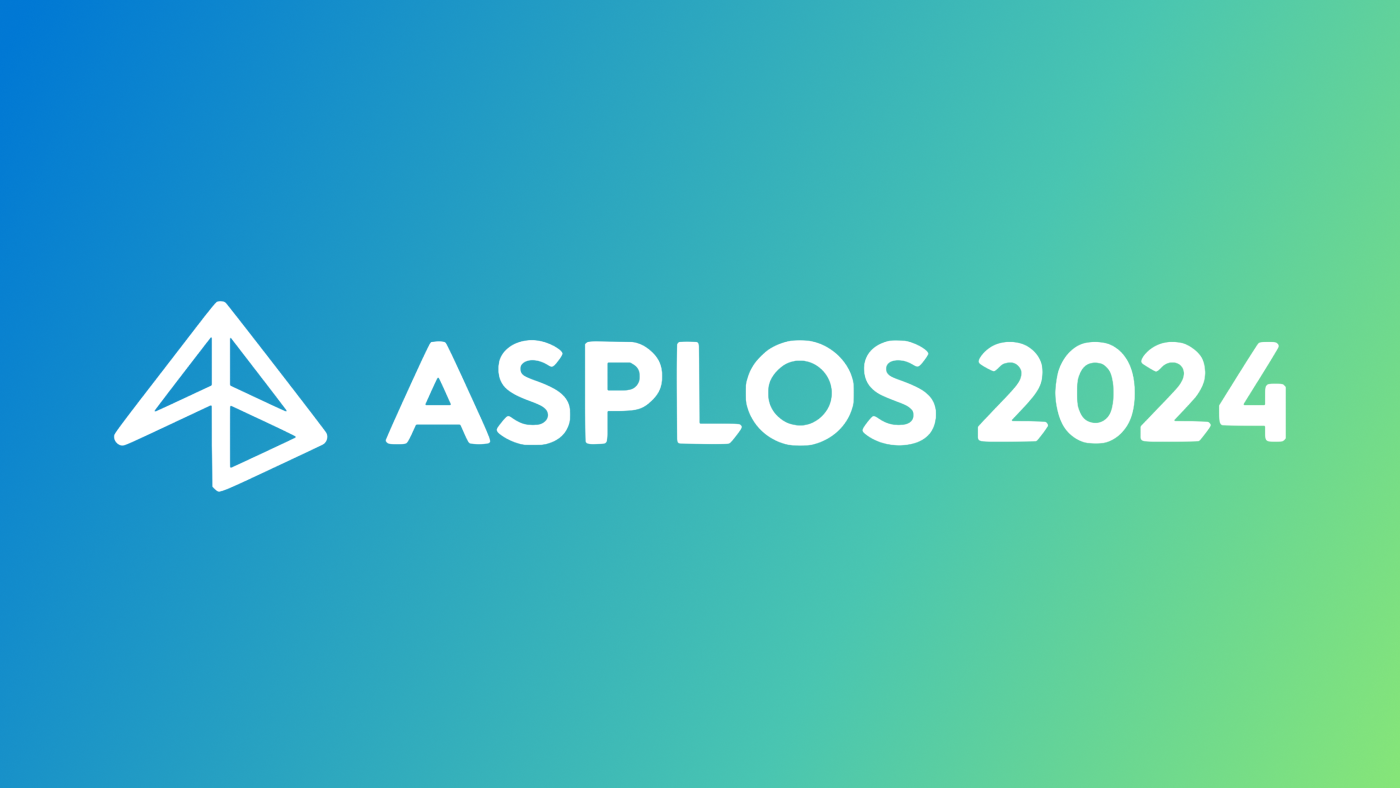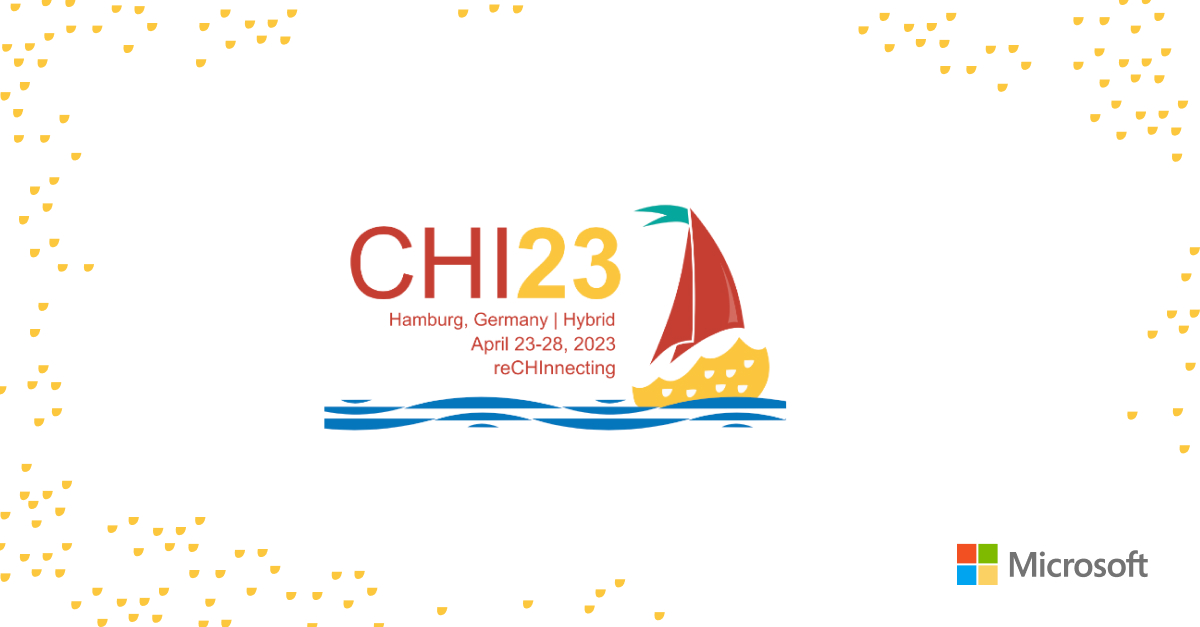By Rob Knies, Managing Editor, Microsoft Research
The research and academic community is rife with conferences. Just about any subject or discipline you can name has its own annual gathering, where the learned and the innovative come together to discuss their work, review the work of others, and connect with friends and colleagues.
Few conferences, however, are more eagerly anticipated than CHI, the Conference on Human Factors in Computing Systems hosted each year by the Association for Computing Machinery’s (ACM’s) Special Interest Group on Computer-Human Interaction. This year’s event, representing the 25th anniversary of CHI, will be held April 28-May 3 at the San José (Calif.) McEnery Convention Center.
Microsoft Research Podcast
Collaborators: Renewable energy storage with Bichlien Nguyen and David Kwabi
Dr. Bichlien Nguyen and Dr. David Kwabi explore their work in flow batteries and how machine learning can help more effectively search the vast organic chemistry space to identify compounds with properties just right for storing waterpower and other renewables.
Maybe it’s a tradition established over a quarter-century, or maybe it’s just the nature of working in the field of human-computer interaction (HCI), but there’s something about CHI that elicits passion in its attendees, as is evidenced both quantitatively and qualitatively by participants from Microsoft Research.
By the numbers, the Microsoft Research contingent that will be traveling to San José is astounding. Consider a few:
- Seventeen accepted papers and notes, 9.3 percent of the 183 accepted for the conference.
- Two conference-committee co-chairs.
- Seven session chairs for particular aspects of HCI.
- 35 papers reviewers.
- Five papers associate chairs.
Add to those notes associate chairs and reviewers, reviewers of other programs, student-design-competition reviewers, workshop-committee members, mentors … the numbers just don’t stop. And what’s amazing is how many Microsoft Research participants are wearing multiple hats in conjunction with the event, having reviewed presentations beforehand, presenting during the event, and helping to organize the conference.
Take Jonathan Grudin, for example. In 2004, Grudin, a principal researcher for Microsoft Research Redmond’s Adaptive Systems and Interaction group, was named a member of the CHI Academy, an honorary group of individuals who have made substantial contributions to the field of human-computer interaction. He is joined as a recipient of that honor by Microsoft Research colleagues Bill Buxton, Susan Dumais, and George Robertson.
This year, Grudin will be teaching or co-teaching three separate courses during CHI, a total of nine hours of instruction over the space of five days.
“CHI is one of ACM’s largest conferences,” Grudin says. “With paper acceptance rates of around 20 percent and around 100 papers presented, CHI serves as the leading repository of polished research in the field. It is a place to see many of the influential figures, as well as hundreds of students and a large number of practitioners.”
Then there are Patrick Baudisch and Ed Cutrell, a couple of peripatetic CHI aficionados who are so involved in the conference that they will be nearly omnipresent in downtown San José once the event begins.
Baudisch, a researcher who also works for the Adaptive Systems and Interaction group, served as a papers associate chair in preparation for CHI 2007. He also reviewed papers and notes, reviewed submissions on Contemporary Trends and Experiences, and screened Works in Progress contributions.
His pace only intensifies once CHI opens:
- He’ll be presenting an interactive demo, along with Microsoft Research colleagues Mike Sinclair and Andy Wilson, called Soap: How to Make a Mouse Work in Mid-Air.
- He’ll serve as session chair for the papers presented under the topic of Navigation & Interaction.
- He co-authored a paper called InkSeine: In Situ Search for Active Note Taking with Ken Hinckley of Microsoft Research, Shendong Zhao of the University of Toronto, and Microsoft Research’s Raman Sarin, Cutrell, Michael Shilman, and Desney Tan.
- He co-wrote a third CHI paper, earPod: Eyes-Free Menu Selection Using Touch Input and Reactive Audio Feedback, with Zhao, Pierre Dragicevic, Mark Chignell, and Ravin Balakrishnan, all of the University of Toronto.
- And he’ll participate as a panelist for a discussion called The I in CHI, a discussion about interactivity and its role in both HCI and this year’s conference.
Oh, and he’ll be the co-chair, along with Gonzalo Ramos of the University of Toronto, of CHI Madness, a daily, 30-minute morning condensation of the day’s presentations, in which each presenter gets 30 seconds to entice CHI Madness attendees to see his or her talk.
Baudisch’s week is exhausting just to read about, but he’s probably still energized by the news he received last month. His other CHI paper, Shift: A Technique for Operating Pen-Based Interfaces Using Touch was named one of six CHI Best Papers for 2007.
“It will be crazy,” Baudisch says of his upcoming CHI participation, “especially the daily Madness sessions. I’ll sleep for a week when I’m back.”
Count in Cutrell, another Adaptive Systems and Interaction researcher, for a bit of post-CHI shuteye, as well. He, too, served as a papers associate chair, screened papers, and reviewed workshop submissions in preparation for the conference, and in addition to co-writing the InkSeine paper, he also co-authored, along with Zhiwei Guan of the University of Washington, a paper called What Are You Looking For? An Eye-Tracking Study of Information Usage in Web Search, which won a CHI 2007 Honorable Mention Award. In addition, he and Guan also wrote a CHI-accepted note entitled An Eye Tracking Study of the Effect of Target Rank on Web Search.
Cutrell also will be chairing a session on Multimodal Interactions. But while his CHI dance card might be full, the exertion, he says, is worth every minute.
“While there are other smaller and more specialized conferences,” he says, “some of them very good, there is really no other place to see the breadth and quality of research and practical experience in HCI that you can get at CHI.
“Almost everyone working in HCI shows up for CHI. At CHI, you get usability engineers, designers, developers, and researchers from academia and industry all together at once, and this makes it a fantastic place for networking, connecting with colleagues, and the cross-pollination of ideas.
“As a researcher,” Cutrell says, “I’m particularly interested in the places where different fields start to intersect. The fact that CHI attracts researchers from across the spectrum of work in HCI makes it a good place to pick up on trends and movement in the field. If you keep your eyes, ears, and mind open, you can start to see where things are going and what interesting stuff is happening at the margins and between more traditional centers of work.”
Similar sentiments explain the commitment of other Microsoft Research personnel integrally involved in CHI, such as:
- JJ Cadiz, a Workshop co-chair.
- Mary Czerwinski, Large Displays session chair and panelist in an interactive session called “Get Real!” What’s Wrong with HCI Prototyping and How Can We Fix It?
- A.J. Brush, who will chair the session entitled Online Representations of Self.
- Danyel Fisher, Social Network Sharing session chair.
- Gina Venolia, Tag, Tagging & Notetaking session chair.
- Buxton, who will participate in a panel discussion on Who Killed Design? Addressing Design Through an Interdisciplinary Investigation.
- Abigail Sellen, co-author, with Mike Aitken of the University of Cambridge and Microsoft Research Cambridge colleagues Steve Hodges, Carsten Rother, and Ken Wood, of the paper Do Life-Logging Technologies Support Memory for the Past? An Experimental Study Using SenseCam. That one, too, won CHI 2007 Honorable Mention accolades.
Grudin’s participation should be enlightening for CHI 2007 attendees.
“I am teaching or co-teaching three courses or tutorials at CHI,” he says, “a 90-minute course on the history of HCI on Sunday evening, a 180-minute course on collaboration technology with Steven Poltrock of Boeing on Monday, and a 270-minute course on the use of personas in design with John Pruitt of Microsoft and Tamara Adlin, an independent consultant, on Thursday.
“On Tuesday, I will participate in a panel discussion on the challenges of evaluating prototype systems, and I also plan to participate in formal events for the board and regular writers for ACM Interactions magazine and the CHI Academy.”
Baudisch’s CHI Madness previews will be a highlight of the conference. The concept debuted during last year’s event and proved to be a big hit. With each presentation limited to 30 seconds or less, the speakers are forced to get straight to the point, and many take the opportunity to use humor or unusual examples to catch the attention of a CHI audience blessed with an abundance of relevant distractions.
“I started CHI Madness last year,” Baudisch explains, “because I felt that CHI had become so big that it had gotten difficult to get the big picture.”
Cutrell cites a few other benefits CHI attendance bestows upon the HCI community.
“CHI is a great place to see the up-and-coming students and researchers,” he says. “CHI is a great place to start building relationships with the talent that’s just coming into the field.”
He also gleaned value from serving as a papers associate chair (AC), helping to coordinate and select the technical program.
“Being an AC is a great deal of work,” Cutrell says, “but it’s also a fantastic way to see at a much deeper level the full spectrum of work submitted to CHI. It’s very fulfilling to be a part of the process that builds and ensures the quality of the conference.
“Of course, as a professional researcher, publication in hugely important to what I do. It’s always nice to get a paper into CHI.”
One thing on which Cutrell, Baudisch, and Grudin agree: The social aspects of CHI are nearly as vital as the professional part:
- Cutrell: “CHI is always an exciting time, because it’s a chance to reconnect with old friends, make new ones, see what’s going on in the field, and try to divine where things are going next.”
- Baudisch: “It is the place to see everybody in the field, to sync up, and to plan future collaborations.”
- Grudin: “The opportunity for talking with past friends and colleagues is a major attraction of the conference for me. Because I did not attend last year, I have two years to catch up on.”
As Cutrell adds, even the cities in which the event is held hold a certain fascination.
“Because CHI is going to be held in San José this year, I’m hoping to see a particularly strong showing of people from industry in the Bay Area,” he says. “The location of the event can have a remarkable effect on its flavor, and I expect that, because it’s in their backyard, a large number of people from startups and Silicon Valley stalwarts will show up.
“That should be a lot of fun and will, hopefully, result in some great exchanges of ideas.”





